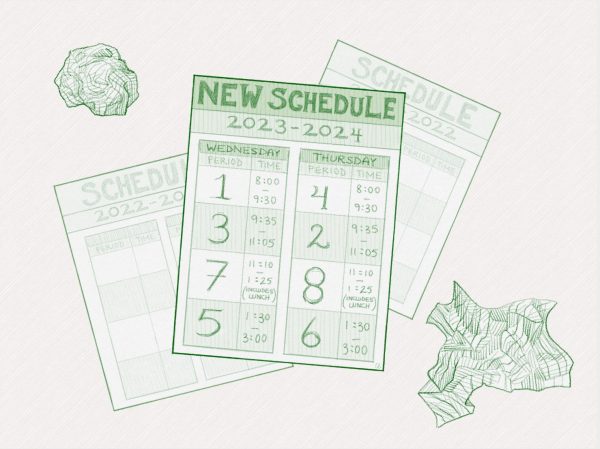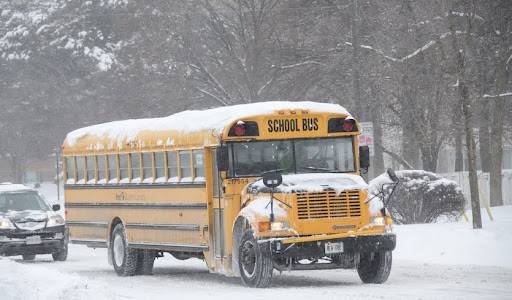Keystone XL Pipeline Debrief
In early 2010, the Canadian National Energy Board approved a plan to build an extensive oil pipeline from Hardisty, Alberta to Steele City, Nebraska.
The humongous, 36 inch-diameter tube that has been proposed would transport crude oil to the United States from Canada at a rate of 800,000 barrels per day over 1,179 miles. This means the equivalent of 33.6 million gallons of fuel from the oil sands of Alberta would flow to Midwest for further refining and distribution every single day.
However, Keystone XL will not be pumping any oil until it can “secure a route permit in Nebraska and acquire certain additional federal permits and authorizations,” according to TransCanada, the company responsible for construction.
Since 2010, the plan has taken flak from environmental groups and politicians who say the pipeline will have a negative effect on climate change. And for a while, things did not look great for the future of the project as President Barack Obama announced that he would not support it as advised by the EPA.
Nevertheless, with a dynamic change in administrations, President Trump has vowed to keep Keystone XL alive and breathing.
Proponents of the pipeline like President Trump support the claim that Keystone XL represents the “much needed refocus on U.S. infrastructure while also producing thousands of well-paying jobs and substantial economic benefit to local communities and the U.S. GDP,” as put by TransCanada.
The reasoning behind this argument is one of efficiency and job production.
First of all, the project does serve a purpose, which is to create a more direct and efficient path for oil to be imported into the United States. As it stands, the original “Keystone” pipeline has transported roughly 1.4 billion barrels of oil across the United States and Canada without incident.
Unfortunately, the line takes a less direct route, which limits the supply and efficiency of oil transportation to important refineries and redistribution centers across our nation. Keystone XL will fill this void with a more direct route.
Secondly, the project will undeniably create jobs. Trump claims 28,000 news jobs in construction will be created. However, the U.S. State Department predicts only 3,900 in construction but 42,000 in total new jobs, such as those supporting the whole operation (food, transportation, management, etc.). The State Department also predicts only 35 percent of these jobs will stay after the pipeline has been constructed over two-year period. Those opposed to the pipeline argue this isn’t worth the effort to go forward.
In November 2015, then President Barrack Obama stated in a White House press conference that the whole issue over the pipeline was “over-inflated” and was “too often used as a campaign cudgel by both parties rather than a serious policy matter.” His idea was that politicians were over-exaggerating its economic benefits and that the construction of such a pipeline was not in the interests of the United States or the environment.
In the meantime, the government would only be facilitating the reliance of America and other markets on harmful fossil fuels – something the Obama Administration sought to undermine.
Since the topic is still being debated, I decided to ask AP U.S. History teacher, AP Human Geography teacher, and Political Science Club sponsor Mrs. Rio a few questions:
Q: How do you think the pipeline issue will play out in the next four years of a Trump administration?
A: The project was recently given the green light by the Trump administration. However, there are likely to be protests and possible lawsuits attempting to prevent the completion of the project. It’s likely the project will be complete, with both countries’ governments currently supporting it. It appears that Canada is looking to pivot to other markets if this deal is not completed soon.
Q: Is the whole issue as over-inflated as Obama said it was?
A: I don’t think issues involving the environment, jobs, and future energy concerns are ever ‘over-inflated’. One of the factors that creates controversy and tension is that there are no easy compromises to please all sides of the issue. Current estimates suggest it will not create that many long-term jobs, and environmental concerns and continued dependency on fossil fuels are legitimate long-term realities we have to confront. The project is, arguably, the most beneficial to the province of Alberta.
Q: What is your opinion on the construction of the pipeline?
A: I would need to do more research on the issue to effectively weigh in on this topic. Although it seems less controversial than the Standing Rock issues, it’s concerning that the decision to build the pipeline seems to be politicized. In a perfect world it would perhaps be more sound to spend money on renewable energy sources and are not environmentally risky or damaging. If oil has to be transported, what is the safest method that minimizes risk and damage to the environment?









